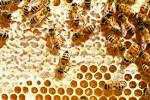IDENTIFICATION OF NATURAL/PURE ADULTERATED DILUTED AND PROCESSED HONEY
Diluted adulterated, natural and processed honey can be identified by taste, smell and color observation. Honey can be diluted by starch, sugar etc. as a result of getting rich quick. If the scent of any of the items used for dilution is perceived, the honey should be suspected, so also the taste and on observation of how fast it dissolves, as honey is not quick ion dissolving. Honey has a unique aroma that distinguishes it from sugar honey (molasses), sugar cane honey etc.
Age of honey is responsible for the viscosity and the color of the honey because honey is approximately a year can also be confirmed when a drop of honey on a sand or table makers an oval shape for a long period of time without being spread like water. The degree of water dilution can be confirmed by amount of water suspended on top of the dropped honey like a suspension.

A stick of match containing honey has to ignite when struck on the matches box is another way to confirming unadulterated honey. If honey is tested unadulterated honey is residue will taste bitter after few minutes, it may be mild or sharp (acidic). This depends on the source of the nectar as a result of the soil chemistry.
Finally, if honey is natural, a teaspoon honey is a glass cup of water is common observation for confirmation. The honey will descend down to the bottom of the glass and get dissolved when stirred. While the adulterated/impure honey get dissolved before reaching the bottom of the glass, few minutes later the surface of the water (H2O) get oily.

source
source
source
source
https://steemit.com/love/@sarnaly/dad-miss-you#comments Check my post .Comment ,upvote and resteem keep it on
okay thank you for concern